
A wall of Twig Saints at the Rowley Gallery. Hidden away off Kensington’s busy Church Street is a secluded refuge for these fragile relics. They are all boxed and beatified by Chris Kenny, each one annotated with its own story.

St Servatus
May 13th
Servatus was bishop of Tongres and housed St Athanasius of Alexandria during his exile by the Arians.
He preached in Greek but the congregation miraculously understood him.
He baptised Attila the Hun.
He died from fever in 384 – not one snowflake would settle on his tomb no matter how heavy the fall.

St Catherine de Ricci
February 2nd
Catherine took the veil at Prato, a convent founded by nine female followers of Savonarola. She was just fourteen years of age and had lost her mother as a small child.
Catherine’s adolescence was very difficult with complex pains and distempers and a hatred of all earthly things.
In her twenties she rose quickly through the ranks of the convent – her sanctity and prudence drew the attention of princes, bishops and future popes.
She wore an iron chain around her neck and engaged in extreme fasting. She was able to have mystical intercourse with St Philip Neri who was in Rome without ever leaving Tuscany.
Catherine would go into ecstasy every week, from Thursday lunchtime to Friday evening eschewing sleep and experiencing Christ’s passion from start to finish including bleeding stigmata and great spiritual suffering.
She enjoyed a mystical marriage with Christ – he gave her a wedding ring that lay beneath the skin on her finger.
She died on February 2nd 1589.

St Rosalia
September 4th
Rosalia’s great beauty was hazardous to her soul.
When she was just fourteen, the Virgin Mary appeared to her and told her to retreat from the world. She was escorted from her father’s castle at night by two angels: one disguised as a knight, the other as a pilgrim. They took her to a secluded grotto on Mount Quisquita where she stayed for some months but, hearing that her parents were looking for her, the angels had to take her further away to Mount Pellegrino.
There she spent the rest of her life devoting herself to penance and prayer. She died alone at the age of thirty.
Her body was found five hundred years later encased in rock crystal by a hunter and, when it was paraded through the streets, delivered Palermo from the plague it was experiencing.
Since then, every year Rosalia is celebrated with an extravagant procession through the city. The saint’s shrine is carried on a massive carriage drawn by forty mules accompanied by fireworks, trumpets, acclamations and cannon fire.
Her cave was made into a sanctuary and an influential study into the genetics of water boatmen was carried out in the water downstream from the cave. Consequently she is the patron saint of evolutionary studies.

St Wenceslaus
September 28th
Wenceslaus’s family were split between Christian and pagan beliefs. His grandmother Ludmilla was Christian but his mother Drahomira and brother Boleslaus were pagan and dangerous. With the death of Wenceslaus’s father, Drahomira took power and began a campaign of persecution against the Christians and arranged her mother-in-law’s strangulation.
Wenceslaus practised his Christianity in secret until he came of age and assumed a position of authority. Then he recalled priests to the land, built churches, even made his own Eucharistic wine and bread. He attempted to end a bloody war by challenging the enemy commander to a deciding wrestling match.
He attempted to make peace with his mother and brother but, while attending a reconciliation feast, his brother murdered him, hacking him to pieces. Wenceslaus was just twenty-two years old.
Although he was only a duke he is celebrated every Christmas as a king in the carol, Good King Wenceslaus which has C19th English lyrics and a C13th melody. In 1984, Manheim Steamroller, an American new age group, recorded a synth arrangement of the carol.
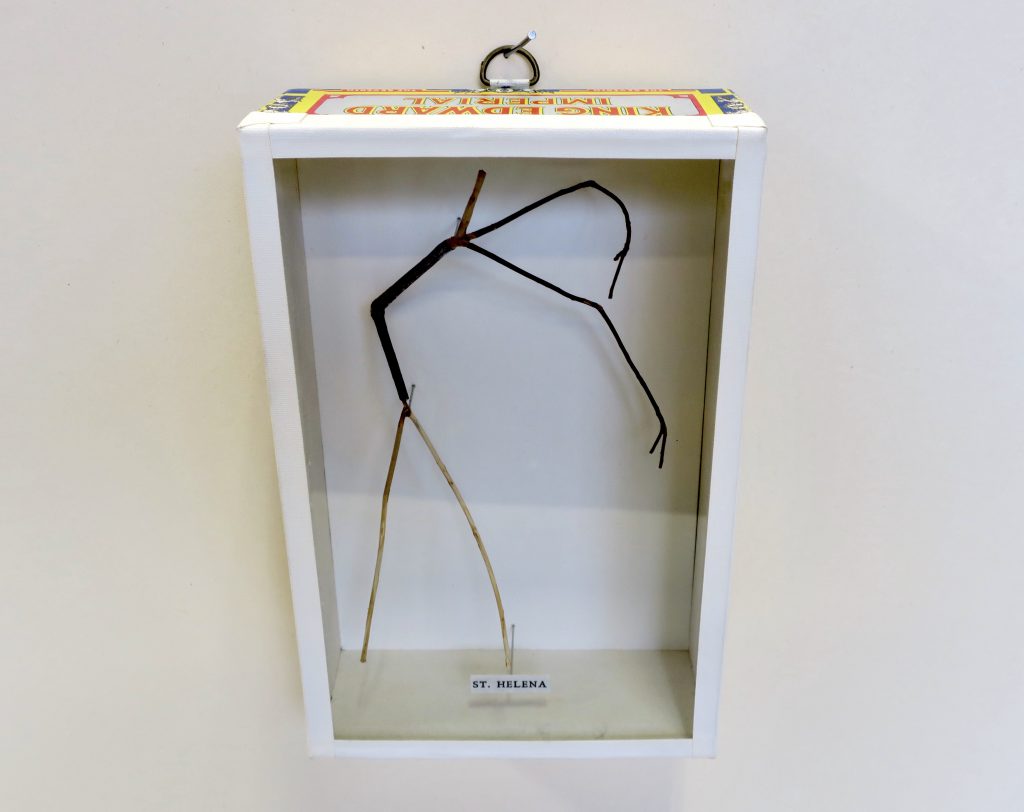
St Helena
August 18th
Helena, a poor innkeeper’s daughter, attracted the eye of Constantius Chlorus, a Roman general – they married and had a son Constantine.
Constantius was made Caesar, that is junior emperor, and was forced to take a different wife, Theodora, and so Helena had to make herself scarce.
When Constantius died, the son Constantine inherited the throne and invited his exiled mother to rejoin him as Empress, appointing her Augusta Imperatrix. She shared his Christian beliefs, which he had adopted while visiting Britain, and she embraced the religious life and carrying out many charitable acts.
Helena made the pilgrimage to Palestine and while there was instrumental in the discovery and excavation of the Holy Cross. She commemorated its reappearance with the building of churches and ordered the destruction of the obsolete Temple of Venus.
Nails from the cross were preserved in Constantine’s helmet and his horse’s bridle.
She kept herself busy: arranging for special soil from Golgotha to be brought to the Vatican Gardens, building a church in Egypt to identify the site of the Burning Bush of Sinai and transporting hundreds of cats to Cyprus to rid a monastery there of snakes.
Helena’s birthplace, Drepanum, was renamed Helenopolis. Her skull is displayed in the Cathedral of Trier.
Evelyn Waugh wrote about her in his novel, Helena.
The Island of St Helena was named after her – it is one of the most remote islands in the world, which is why Napoleon was imprisoned there.
Helena is the patron saint of new discoveries.

St Sebaldus
August 19th
Sebaldus was of Franconian origin.
He married a French princess while studying in Paris but abandoned his bride on the wedding night to go on a pilgrimage to Rome.
In Rome he met and worked with the missionaries Willibald and Winibald.
Sebaldus next lived as a hermit in the woodland of Poppenreuth, west of Nuremberg.
When visiting a peasant couple in their cottage in the wood one snowy night, Sebaldus transformed icicles into firewood and saved them all from freezing to death.
Sebaldus was merciful – one day when he was being heckled by a profane blasphemer, the earth opened up to swallow the pagan. As he fell into the hole, the heckler asked for forgiveness and was spat back out.
Sebaldus is the patron saint of cold weather.

St Samson
July 28th
Samson was brought up in the abbey of Llantwit ruled by St Illtyd. Everybody liked him except Illtyd’s nephew who tried to poison Samson, unsuccessfully.
He was ordained and worked as a bursar on the holy island of Caldey. He became abbot when the former abbot St Pyr fell down a well while drunk.
Samson set about evangelizing Wales, Ireland, Cornwall and the Scilly Isles, where one of the islands is named after him.
He persuaded his father to become a monk and his mother to become a nun and himself lived as a hermit near the mouth of the Severn before travelling to Brittany to build a monastery at Dol. Here he planted fruit groves, in reclaimed marshland, that still bear his name.
He founded other abbeys and had jurisdiction over the Channel Islands.
The Samson pillar at Llantwit is one of the oldest Christian monuments in Britain.
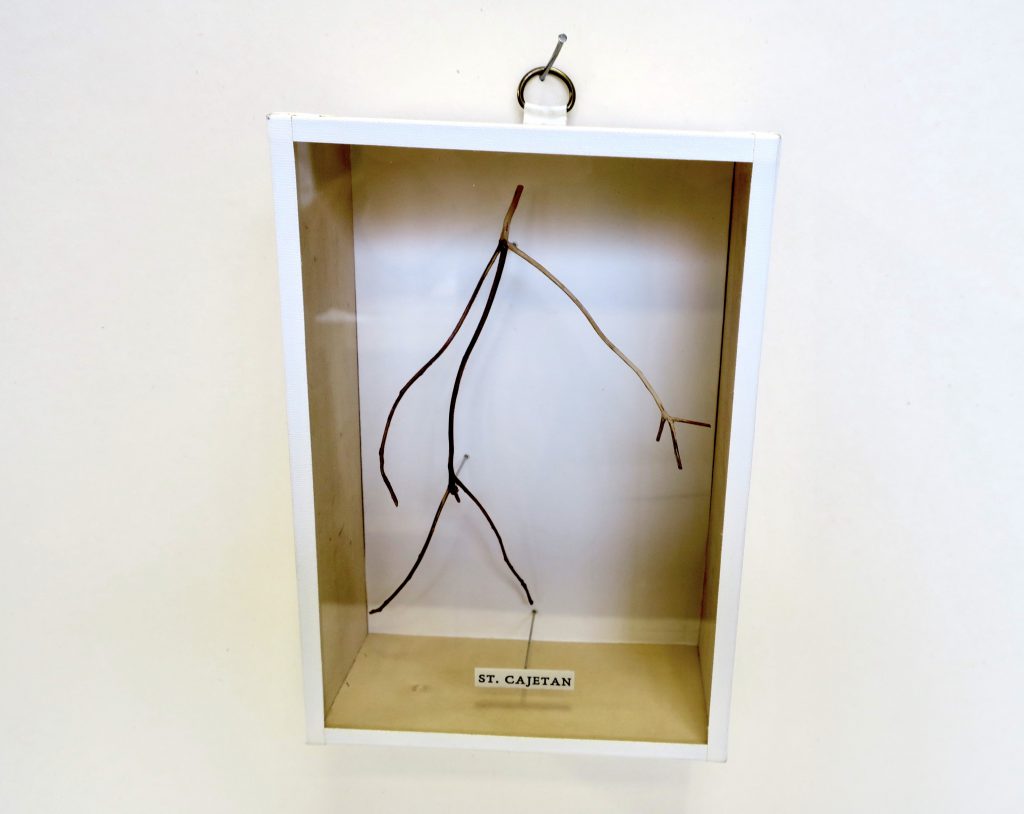
St Cajetan
August 7th
With the death of his mother, Mary Porta the Countess of Tiene, Cajetan inherited a great fortune. He did not take advantage of it, choosing instead to spend his time assisting in the hovels of the have-nots and embracing voluntary poverty. Other nobles were mystified but tolerated Cajestan’s eccentric charity.
On Christmas Eve 1527, Cajestan had a vision where he was present at the birth of Christ and given the infant to hold from the hands of its spotless mother.
In response to Martin Luther’s fulminations against ecclesiastical corruption, Cajestan founded an ascetic order of monks, the Theatine, with Giovanni Pietro Caraffa, Bonifacio da Colle and Paulo Consiglieri. They had no possessions and confined themselves to caring for the sick, comforting prisoners and bringing the sacraments to the laity.
He also started a non-profit pawnshop that became the Bank of Naples.
When Cajetan fell ill from exhaustion, he refused the attention of doctors. On August 7th 1547 he lay down upon some ashes and died.
Cajetan is the patron saint of Argentina, gamblers, document controllers, the unemployed and good fortune.

St Nicholas of Tolentino
September 10th
Nicholas was from a poor family in Tolentino, a town with a bad reputation. He decided to enter the Augustinian order after encountering the charismatic Reginald of Monterubbiano who ran the local monastery.
Nicholas only cared for others, not himself. One day, when he could no longer function because of the lack of food, the ghostly figures of Mary, Augustine and Agustine’s mother Monica appeared and told him to eat a bit of bread marked with a cross. He did this and immediately regained his strength – this led to the manufacture of the St Nicholas biscuit, popular to this day.
Nicholas was responsible for many miracles: he was a vegetarian and when served roast partridges by mistake, he blessed the birds and they flew away.
On another occasion, Nicholas heard the cry of a friend’s soul in Purgatory – Nicholas sorted out a quick release for him and some other poor souls. He quelled storms, saved burning buildings and resurrected dozens of dead children.
He also pacified his hometown of Tolentino – stopping the fights between the Guelphs who supported the Pope and the Ghibellines who preferred the Holy Roman Emperor. He took no credit for his good deeds saying he was just ‘God’s tool’.
He stayed in Tollentino for the rest of his life and died on September 10th 1305.
Nicholas’s relics are distributed around the world. Every Tuesday, a scrap of his clothing is venerated in the church of Macabebe in Pampanga in the central Philippines.
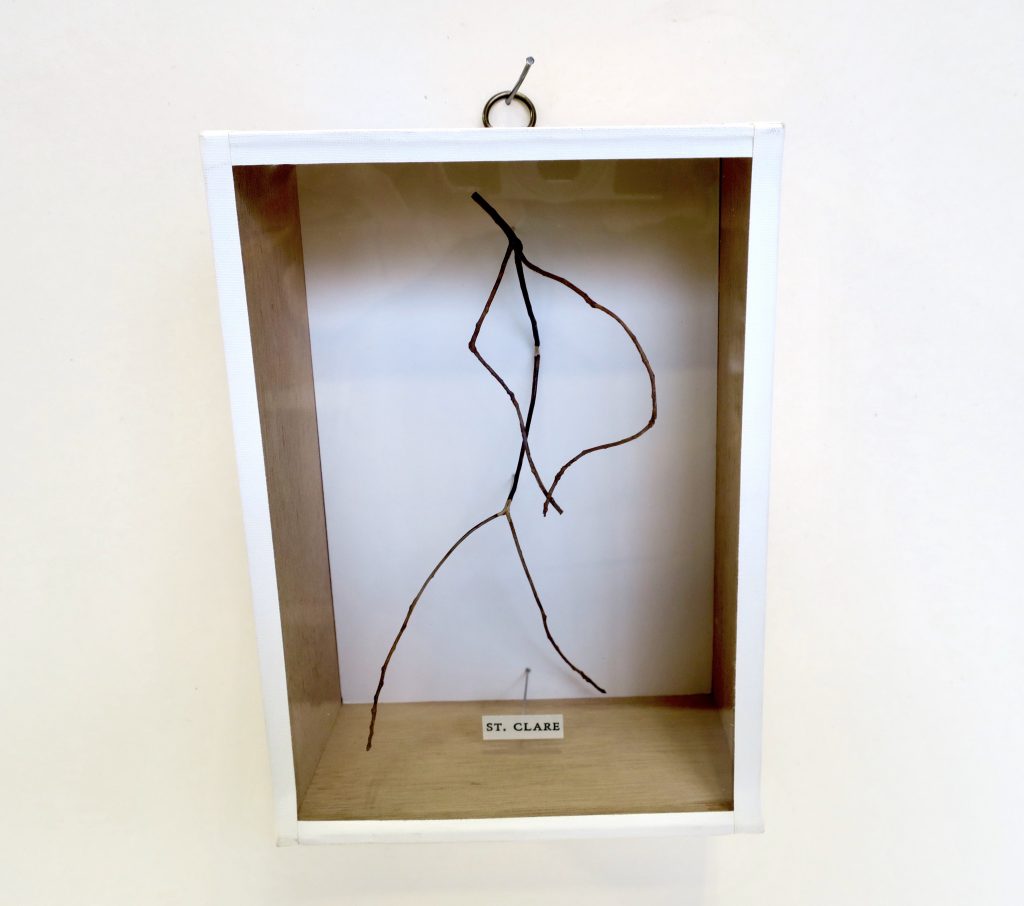
St Clare
August 12th
After hearing St Francis preach, the young Clare Offreduccio was changed forever. She went against her father’s wishes, rejected conventional family life and set up a holy community at the Portiuncula Chapel near Assisi.
A number of women joined her – they cut off their hair and wore coarse brown wool habits; their lifestyle attracted many more followers and they became known as the Poor Clares. They practised penance, cultivated spiritual joy and shunned all revenues, depending solely on charity. They went barefoot, slept on the ground, ate no meat and lived in almost complete silence.
Clare celebrated the beauty of the world; she meditated on the Passion and experienced mysterious tortures that filled her eyes with blood and tears.
When Saracen soldiers came to attack Assisi, Clare brought out the Sacrament in a monstrance – the assailants were suddenly frightened and ran away.
When Clare was very ill and could not attend mass, she was miraculously able to see and hear the service on the wall of her room – consequently she is the patron saint of television.
When St Francis died, Clare, his “little spiritual plant”, fell upon his body washing it with her tears and covering his sacred stigmata with her soft kisses. On August 11th 1253, St Francis returned the compliment by coming back to guide Clare’s soul to heaven.

St Bartholomew
August 24th
Bartholomew (who was also known as Nathaniel) was one of the twelve apostles. Bartholomew means ‘son of the furrows’ – his father was a humble ploughman. Bartholomew recognised Jesus as the Son of God and the King of Israel, the first time they met. Bartholomew was sitting under a fig tree, Jesus saw him and, knowing that he was a virtuous and faithful man, told him that he witness heaven opening and angels going up and coming down.
Bartholomew took the gospel to India and Armenia but he was captured by the pagan King Astyages (whose brother Polymius he had converted) and flayed and crucified upside down.
A large piece of his skin and some of his bones washed up on the island of Lipari, these relics were later distributed to Benevento, to Rome where they were held in a hospital, to Frankfurt Cathedral and to Canterbury Cathedral.
He appears with his flayed skin in the Sistine Chapel although Michelangelo makes the face of the hanging skin a self-portrait.
During World War II, there was an order for Bartholomew’s silver statue to be melted down but, when it was weighed, it miraculously seemed to be only a few grams and so was spared.
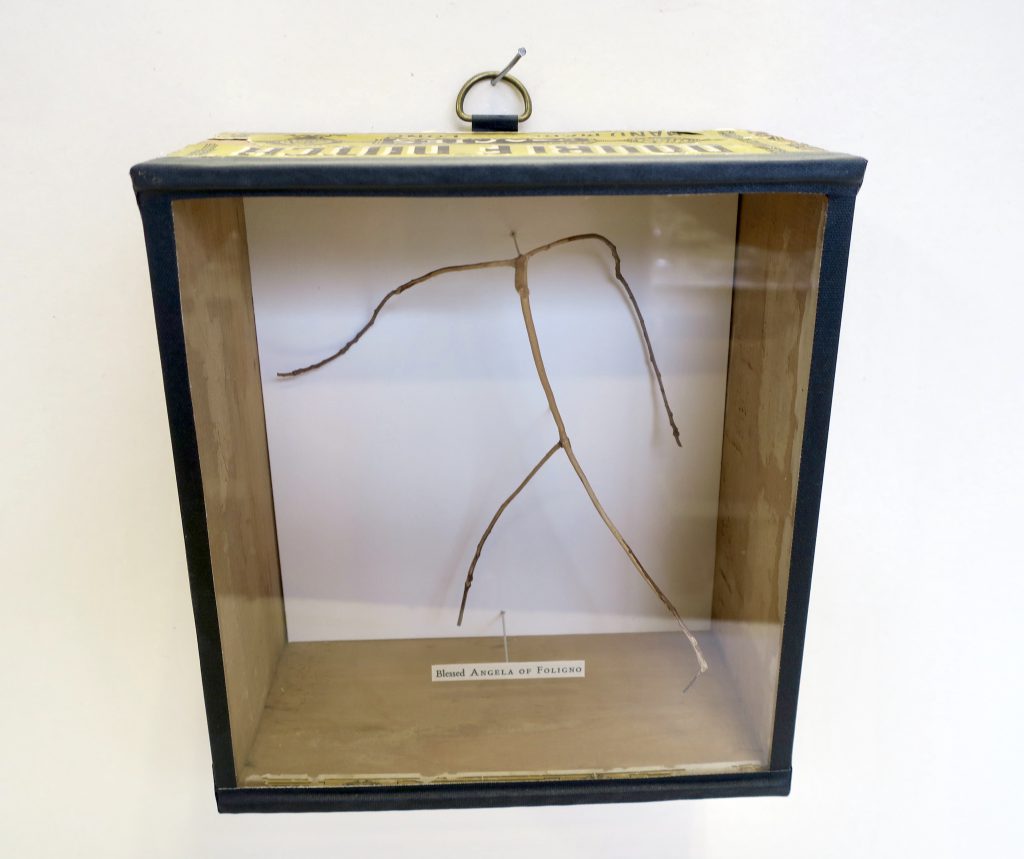
Blessed Angela of Foligno
January 4th
Angela misspent her youth – revelling in sensuality, surrounding herself with unnecessary possessions, committing sacrilege even.
However all that changed when she encountered St Francis in a dream… she confessed her sins at some length, gave away all her property and became a penitent. At around this time all her family died of the plague.
She expressed her faith through ‘anorexia mirabilis’, refusing food, and instead drinking the pus from the sores of the sick which she said was as “sweet as the Eucharist”.
Angela would fall into a visionary trance at the drop of a hat. She dictated her revelations to Brother Arnold and these became her book of ‘Visionum et Instructionum’ in which she emphasises the importance of divine light, obtained by almost non-stop praying.
She only became a full saint on 9th October 2013, more than 700 years after her death.

St Apollinaris
July 22nd
Apollinaris was an apostle of St Peter and was tasked with evangelising Ravenna, at this time a port of great commercial and strategic importance busy with visiting merchants, soldiers and sailors.
He became the first bishop of Ravenna but his miracle-working attracted negative attention from Emperor Vespasian and, while fleeing with his flock, he was arrested and made to walk on burning coals.
When he continued to evangelise, he was caught, hacked with knives and had boiling water poured in his wounds.
Next he was beaten in the mouth with stones because he wouldn’t refrain from spreading the word.
He was exiled to Greece but as his prescence there silenced the oracles, he was returned to Italy where he was beaten to death by idolaters.
His relics are still kept in Ravenna and are especially effective against gout, venereal disease and epilepsy.

St Justin
April 14th
Justin was brought up a pagan; he explored many philosophies, such as Epicureanism, Stoicism, Pythagoreanism, Platonism – all of which he rejected because of their godless nature.
He wrote in criticism of heretics in his Apologies. The cynic Crescentius took revenge by denouncing him to the prefect of Rome who had Justin and his students decapitated. His relics are kept in both Rome and Valetta.
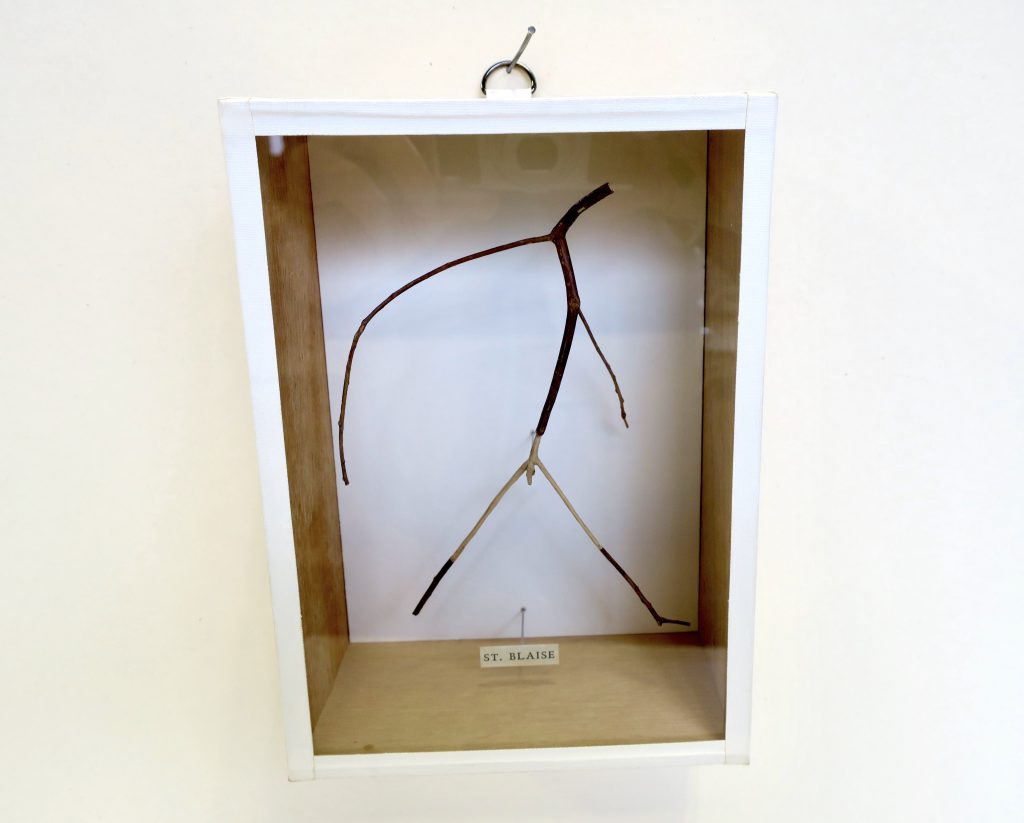
St Blaise
February 3rd
Blaise was a doctor and bishop before going to live in a cave on Mount Argeus.
Although attempting to live the solitary eremitic life, he continued as a general practitioner for the many sick people and animals that sought his healing powers. All would queue quietly while he finished his prayers.
Agricola, the Roman governor of Cappadocia, was passing by hunting for beasts that could eat Christians in the Circus Maximus. He noticed a queue of wolves, tigers, bears and lions waiting outside Blaise’s cave and enquired within.
Blaise was arrested and ordered to apostasize. He refused and was slung in prison. From his cell he continued to cure the sick: a distressed piglet, a little girl choking on a fish bone. This gave rise to the blessing of throats on St Blaise’s Day.
The vindictive jailers threw him in a lake but he walked upon the water. He asked the pagans to have faith in the gods they espoused and join him on the water – they all drowned. An angel brought Blaise safely back to the shore but there were more persecutors grabbed him, scratched him with sharp wool combs and beheaded him.
A golden reliquary containing Blaise’s throat is kept in Dubrovnik Cathedral.
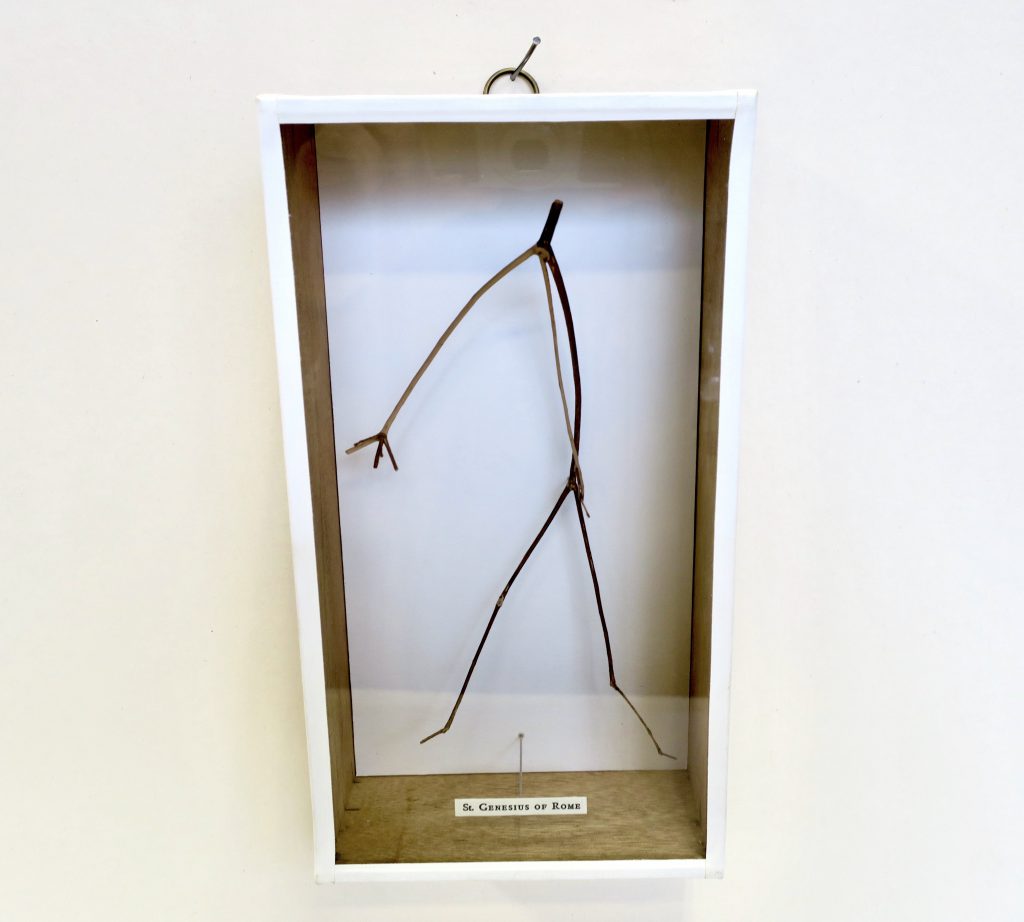
St Genesius of Rome
August 25th
Genesius was a comedian who satirised Christianity in his act.
He was performing before Emperor Diocletian in a play that mocked baptism – quite out of the blue he was overcome by a divine spirit. He saw angels carrying a large book listing all his sins; he immediately called out to be baptised.
Diocletian was horrified and had him arrested before the baptism could take place.
Genesius refused to give up his newfound faith despite being tortured and was executed by beheading saying that he would be baptised in his own blood.
He is the patron saint of actors, magicians and comedians.
The Shrine of St Genesius in St Malachy’s Church in New York is a spiritual landmark for American actors.

Blessed Ludovica Albertoni
January 31st
Ludovica Albertoni was a Roman noblewoman who married a Roman nobleman; he was called Giacomo della Cetera.
The marriage wasn’t great because Giacomo was so bad-tempered.
Luckily after twelve years he died and Ludovica could concentrate on what she really enjoyed, doing charity work for the order of St Francis and experiencing divine ecstasies on a regular basis.
She died during one of her ecstasies on January 31st 1533.

St Barnabas
June 11th
Barnabas was a prominent disciple and friend of St Paul, they made many converts at Salamis and Paphos despite constantly having to flee persecution.
He attended the Council of Jerusalem arguing that uncircumcised Gentiles be allowed into the Christian community.
Eventually Barnabas’s zeal attracted negative attention and he was stoned and burned by Jews from Syria.
In 478 he appeared in a dream to the Archbishop of Constantia and revealed the place of his sepulchre under a carob tree – here he was found with the manuscript of St Matthew’s Gospel on his breast.

St Baudarinus
August 1st
Baudarinus was bishop of Soissons but had to flee after refusing to hand over church property coveted by King Clotaire. He sailed for England after scratching his name and date on a rock. There for seven years he cultivated a monastery garden and grew famously excellent vegetables and simples used to cure many sick people.
Meanwhile in Soissons a drought and a famine, punishments from heaven, were laying waste to the country. An envoy was sent to fetch back Baudarinus helped by the inscription on the rock.
Baudarinus was unwilling to leave the peace of his fertile garden but obeyed God’s will and returned to Soissons where he ended the famine. Simples that he brought from England were used to cure the King’s daughter and other royal persons.
※
Chris Kenny / The Rowley Gallery
※

